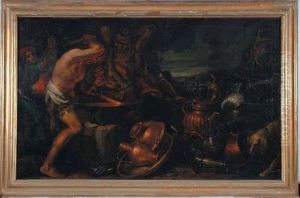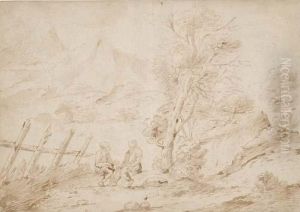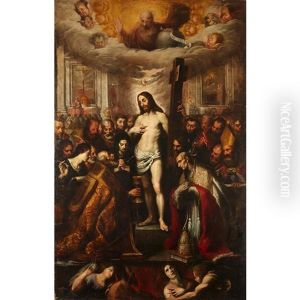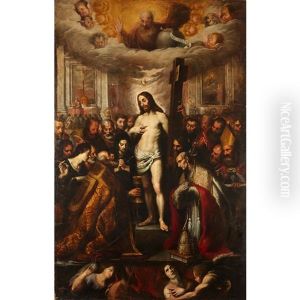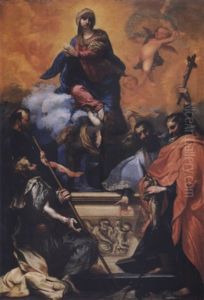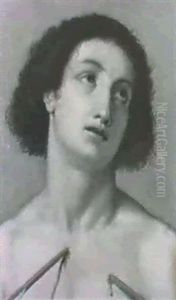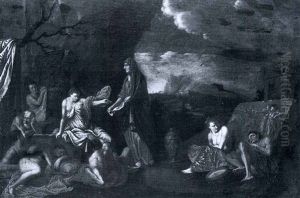Clemente Bocciardo Paintings
Clemente Bocciardo, also known as Clemente Boccaccio, was an Italian painter born in 1620 in Genoa, Italy. His life and career were significantly influenced by the vibrant artistic culture of the 17th century in Genoa, a period marked by the flourishing of Baroque art. Despite the common confusion with the famous writer Giovanni Boccaccio due to the similarity in their names, Clemente established his own reputation in the realm of painting. His contributions are primarily noted in the Baroque style, characterized by dramatic expression, rich coloration, and dynamic movement, which were the hallmarks of the period.
Bocciardo's artistic journey was deeply rooted in the Genoese Baroque tradition, where he was influenced by leading artists of his time. Although specific details about his training are scarce, it is believed that he was part of the extensive network of artists working in Genoa, which allowed him to develop a distinctive style that combined local traditions with influences from other Italian artistic centers. His works often depicted religious themes, a common subject for the era, showcasing his ability to convey spiritual narratives with emotional depth and visual richness.
Throughout his career, Clemente Bocciardo faced the challenges of working during a period of significant competition among artists in Genoa, as the city was a vibrant artistic hub. Despite these challenges, he managed to secure commissions and produce works that contributed to the city's cultural legacy. His paintings are notable for their detailed execution, use of light, and ability to capture the essence of the Baroque spirit. Unfortunately, Bocciardo's career was cut short when he died in 1658, leaving behind a modest but significant body of work that continues to be studied for its contribution to the Genoese Baroque movement.
Today, Clemente Bocciardo is remembered as a talented artist who embodied the spirit of his time, contributing to the rich tapestry of Italian Baroque art. His works can be found in various churches and collections, standing as testaments to the enduring appeal of the Baroque style and its ability to convey human emotions and spiritual experiences. Bocciardo's legacy, though not as widely recognized as some of his contemporaries, remains an important part of the historical narrative of Italian art, offering insights into the complex interplay of cultural, religious, and artistic forces that shaped the era.
